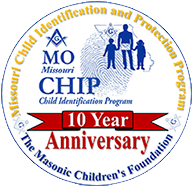
It happens more than you would imagine. Prostitution of juveniles, or sex trafficking, is not a new phenomenon but is an increasingly central component of the criminal justice system’s fight against child sexual exploitation. Child sex trafficking includes youth bei ng forced into prostitution, pornography and other forms of sexual exploitation. Through physical, verbal and sexual abuse, the child is forced to perform sexual acts to receive food and shelter, according to the Office of Juvenile Justice and Delinquency Prevention (OJJDP).
ng forced into prostitution, pornography and other forms of sexual exploitation. Through physical, verbal and sexual abuse, the child is forced to perform sexual acts to receive food and shelter, according to the Office of Juvenile Justice and Delinquency Prevention (OJJDP).
Under the Trafficked Victims Protection Act of 2000, exploitation of persons under the age of 18 for purposes of a commercial sex act, with or without coercion, is considered sex trafficking. Commercial sex trafficking can occur within or outside of U.S. borders. The U.S. Department of Health and Human Services estimates between 244,000 and 325,000 American youth are considered at risk for sexual exploitation, and an estimated 199,000 incidents of sexual exploitation of minors occur each year in the United States. The average age at entry into commercial sex for girls is 12-14 years old; the average age for boys and transgender youth is 11-13.
Below, the first link depicts a sting that focused on Super Bowl–“High-profile special events, which draw large crowds, have become lucrative opportunities for child prostitution criminal enterprises,” said Ron Hosko, assistant director of the FBI’s Criminal Investigative Division. “The FBI and our partners remain committed to stopping this cycle of victimization and putting those who try to profit from this type of criminal activity behind bars.” The minors recovered during the Super Bowl operations range in ages from 13 to 17 years old and include high school students and children who had been reported missing by their families.
Why it is so difficult to locate these children: The identification rate of juvenile victims is especially inadequate.
The tools used by traffickers to keep their victims compliant – namely: psychological coercion and manipulation, fear, and physical trauma – are particularly effective when applied to juveniles, meaning that the likelihood of a juvenile victim pursing escape is remote. As juvenile victims are particularly difficult to see and particularly unlikely to provoke suspicion when seen, there is a special urgency for the creation of new strategies for the detection of juvenile victims of human trafficking.
http://dfw.cbslocal.com/2014/04/08/five-juveniles-recovered-in-north-texas-human-trafficking-sting/






Off